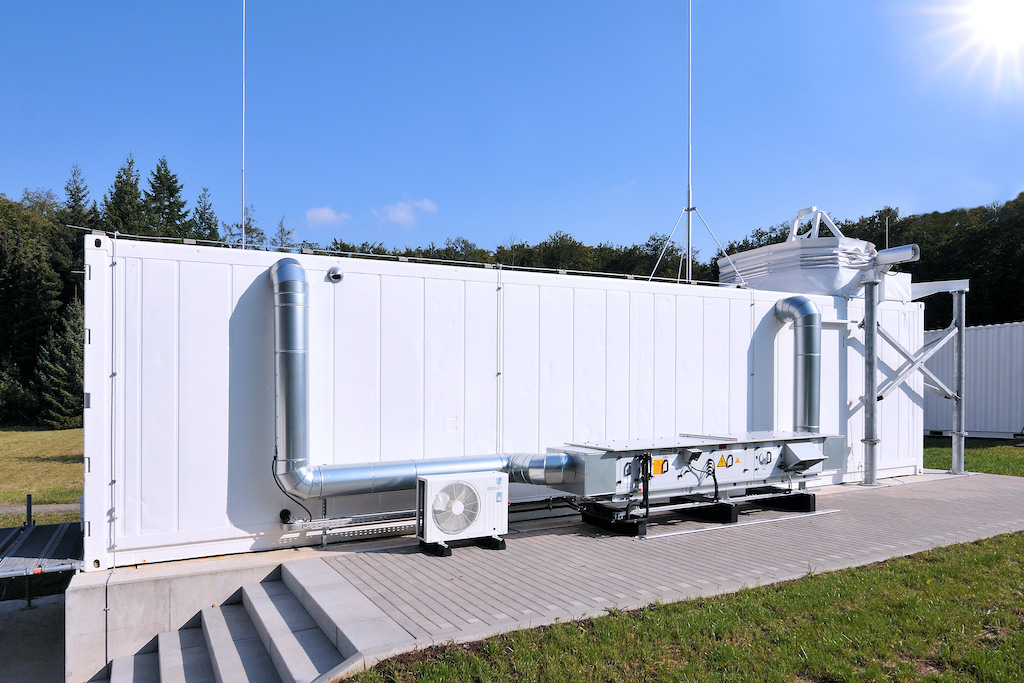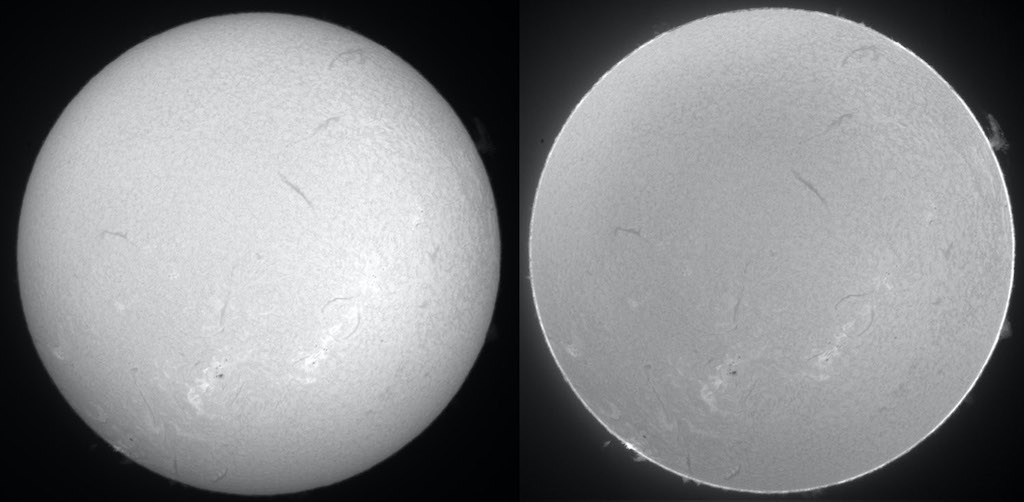After just two years of development and construction, the Thuringian State Observatory now has a modern solar laboratory. Guests from politics, research and industry will come to Tautenburg for the inaugural ceremony on October 17, 2024.
The Thuringian State Observatory has a new observation facility. The light of the sun is studied in the Tautenburg Solar Laboratory (TauSoL) in order to better understand its magnetic cycle. The laboratory is also used to develop a prototype for automated solar observatories. Their data will contribute to explore the interior of the sun.
 The Tautenburg Solar Laboratory (TauSoL) with the heliostat on the roof. Photo: TLSThe Tautenburg Solar Laboratory is housed in an air-conditioned container twelve meters long and almost 2.5 meters wide. A heliostat is installed on the roof of the container. It is protected from the weather by a foldable dome when no observations are being made.
The Tautenburg Solar Laboratory (TauSoL) with the heliostat on the roof. Photo: TLSThe Tautenburg Solar Laboratory is housed in an air-conditioned container twelve meters long and almost 2.5 meters wide. A heliostat is installed on the roof of the container. It is protected from the weather by a foldable dome when no observations are being made.
An image of the entire visible solar disk
A heliostat is a special two-mirror system that continuously guides sunlight into the interior of the container through an opening in the roof. One mirror of the heliostat automatically tracks the sun, while the other, fixed mirror, directs the light vertically downwards into the container. There, the light hits a permanently installed telescope, which produces an image of the entire visible solar disk.
A stable table for optical setups is installed in the container. The table's feet have their own foundation so that no vibrations can be transmitted via the container to the sensitive measurement setup. The scientists at the Thuringian State Observatory will carry out various tests with telescopes and spectrometers in this optics laboratory. They will develop an ideal instrument for spectral and polarimetric analysis of the entire visible sun.
The solar laboratory will be used to research the sun's magnetic cycle. The first step is to build a two-dimensional spectropolarimeter with which the entire image of the sun can be examined spectropolarimetrically at different wavelengths of the solar spectrum. Spectropolarimeters are optical devices for measuring the wavelength-dependent degree of polarization of light.
 First image of the sun taken with TauSoL in the light of the H-alpha spectral line. In the right image, the outermost edge of the sun was highlighted in order to make the solar prominences shooting beyond the edge of the Sun visible. Photo: TLSMagnetic fields from stars generate polarized light. In polarized light, the light waves only oscillate in a certain direction or a certain plane. In non-polarized light, on the other hand, all possible directions of oscillation are superimposed. In the case of the sun, light of certain wavelengths that is emitted in the area of strong magnetic fields on the sun can exhibit a characteristic polarization. By measuring the spectral distribution of this polarization, the direction and strength of the magnetic field on the sun can be determined.
First image of the sun taken with TauSoL in the light of the H-alpha spectral line. In the right image, the outermost edge of the sun was highlighted in order to make the solar prominences shooting beyond the edge of the Sun visible. Photo: TLSMagnetic fields from stars generate polarized light. In polarized light, the light waves only oscillate in a certain direction or a certain plane. In non-polarized light, on the other hand, all possible directions of oscillation are superimposed. In the case of the sun, light of certain wavelengths that is emitted in the area of strong magnetic fields on the sun can exhibit a characteristic polarization. By measuring the spectral distribution of this polarization, the direction and strength of the magnetic field on the sun can be determined.
Predicting solar flares more accurately
The renowned solar physicist Markus Roth, Director of the Thuringian State Observatory, is delighted that the research work in the solar laboratory is starting. “After around two years of planning and construction, the Thuringian State Observatory is now adding another research station to its observation facilities. The sun is the star that is closest to us. We are therefore best placed to study it. Our aim is to learn more about how a magnetic field is generated inside stars, how the magnetic field changes and how it is influenced by plasma flows inside the star.” The answers to these questions are supposed to help make solar flares more predictable in the future.
Strong eruptions occur repeatedly on the sun, which hurl a lot of material into space. This material (plasma) can affect technological facilities in space and on Earth as a solar storm. For example, satellites for communication or navigation could fail or the power supply on Earth could be disrupted.
“With the new solar laboratory, the Thuringian State Observatory will become one of the leading German research institutions for researching the sun,” Roth emphasizes. Guests from politics, the Thuringian ministries, the companies involved in the construction, and research partners of the Thuringian State Observatory will attend the opening of the Tautenburg Solar Laboratory on October 17, 2024.
Contact
We will gladly answer any further questions!
Professor Dr. Markus Roth
Director
Telefon: 036427 / 863 51

